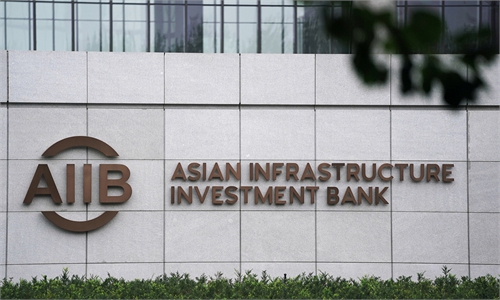Green finance key to China-US collaboration

Illustration: Tang Tengfei/GT
US President Joe Biden held a two-day virtual climate summit attended by 40 other world leaders with the aim to address the global climate crisis. China was one of the participants. Indeed, China and the US are jointly shouldering responsibilities as major powers for climate change, laying the foundation for cooperation in the field of green finance.At present, Biden is implementing climate initiatives and has returned to the Paris Agreement. He is also planning to invest enormously in clean energy and biofuel, increase low-carbon technology investment and put up a punitive carbon tax as a policy option. Therefore, the role of green finance as a lever is obvious - it will boost broader economic cooperation.
In terms of green investment, Biden has announced a $2 trillion infrastructure plan, which aims to build modern and sustainable basic infrastructure facilities, and create a fair clean energy system. It is expected the existing China-US green cooperation projects will accelerate. For instance, the US-China Green Fund, which was established in 2016 with an investment of more than 10 billion yuan ($1.5 billion), will be boosted. China's production of photovoltaic and lithium cell ranks No.1 in the world, and we can expand cooperation with the US in this regard. Whereas the US will invest in green transportation, Chinese companies such as CRRC and CNR can deepen cooperation with the US. Collaboration on carbon trade is also possible.
Of course, we should also evaluate the difficulties in bilateral green finance cooperation. First, there has always been a lack of strategic trust between China and the US. The intention of the Biden administration to contain China's rise has not changed. Although green development has become consensus of all countries, cooperation in the finance sector still has to be based on mutual trust.
Second, once the window of opportunity of Biden's policymaking period passes, China-US cooperation still has uncertainties. The green policy of Biden requires a long-time span, and its actual implementation is unknown. It is not clear if his successor will continue this policy.
Third, the green standards in China and the US are different. The guiding principles for green industry identification and categorization are remarkably wide. Meanwhile, there is no unified and authoritative definition of green finance and green industry defined on the world stage. This has created obstacles for transnational green finance, and makes the international flow of green funds weak.
Fourth, China and the US have different information release systems. Without a unified information release system, there will be asymmetric information in terms of transnational green finance data. It will be difficult to set up an international green industry and environmental data base.
An objective and rational understanding of these obstacles will help provide more practical policy suggestions to future China-US green finance cooperation. First, the two countries should seek dialogues in the green finance field. Previous mechanisms which were temporarily suspended such as US-China Climate-Smart Cities Initiative can restart. Research institutions and think tanks can positively evaluate global carbon achievement rates. Think tanks can also develop more evaluation indicators, including carbon profits and loss and carbon balance sheets.
Second, companies and financial institutions from both sides should play an active role to lead bilateral investment onto a greener path. China can welcome and promote US investors to invest in China's green bonds, stocks, funds and projects via various channels. Both can promote green finance into the mainstream finance market and make green assets become major assets in the financial sector. The information release mechanism should be improved in order to avoid a two-way subsidy.
Third, China and the US should create the balance sheet of central banks to bring in green assets. Central banks from both sides can cooperate and research to promote green assets balance sheet mechanisms. During this process, the "two mountains" theory (whereby lucid waters and lush mountains are invaluable assets) can be promoted.
All in all, green finance is an optimal breakthrough for the China-US strategic restart. With green finance, China and the US do not have structural conflicts of interests and ideologies. We have a good foundation for new cooperation. It is expected that green finance will become key to starting cooperation between the two countries.
The author is professor and executive dean of Chongyang Institute for Financial Studies at Renmin University of China. opinion@globaltimes.com.cn



